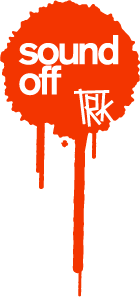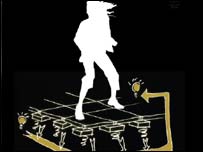What will ‘green’ come to mean?

Crazy sexy cool... and green. Earlier this fall, a new nightclub in the Netherlands (Rotterdam’s “Sustainable Dance Club”) announced plans to power its lights and sound by converting the movement of dancers into electricity. The club will also feature rainwater toilets, biological beer, and walls that change color based on heat generated by its revelers.
It’s this last feature that I think is especially cool, because it’s... well... cool. Because the club’s owners know that even after the novelty of ecotech has worn off, this will still be a SDC-only feature that’s a lot  of fun.
of fun.
Green is everywhere. If you didn’t click the "movement of dancers into electricity" link above, click it now and notice who sponsored the YouTube video. Marketing firms are experiencing a convergence of ethics and economics, that underlayer of meaning that makes sense of spending all day staring at Photoshop. And since many of the marketers now rising to senior creative positions are of the generation that longs to "make peace with our upbringing" (as my big brother once phrased it), today's sustainability-minded design landscape feels like Shangri-La La La.
Not only "feels like," but "is." Sustainability-mindedness in marketers and the market alike is helping change not only how things are talked about and sold, but how they are made. Big manufacturing companies are changing their practices all of the way down to the ground, in the development of product lines that can be examined by the most rabid treehugger, all of the way back to the source. Big corporations are developing new design and manufacturing models that support these products. This is no small feat, and no small feature... because, in other words, they are investing money in new processes. Every dollar spent on these new processes is an argument not to change back to old ways, even after green stops being sexy.
It's like KFC deciding to change its own transfat oil-- all by themselves-- rather than being forced to do so by the New York Health Board.
It's like Shaw teaming with McDonough to rethink waste (see "Shaw me the light" post below). Or Mohawk spreading the use of SIM for initial fulfillment of custom sample requests across all commercial brands. Or Tandus leading the way with more sustainable sampling books that serve interior designers in ways never dreamed of in the old school.
Austin-based friends of ours Adam and Marty Butler recently interviewed me and Anj about the tipping point where green building will go mass market, and asked what we would name the next incarnation of movement... something that would capture its potential and yet also the urgency that needs to sustain as it becomes widely popular and then (inevitably) passé. As the Butler Bros pointed out, everybody still cares about saving the whales, but not so many people still give money.
But we couldn’t bring ourselves to come up with something clever; our goal is that as the trend stops being trendy (as they tend to do) changes will have been made so that sustainable design and merchandising are not 'best practices,' but are the only business practices. Less wasted time, energy, resources and money... better processes, products and marketing. Simply status quo.
Caleb Ludwick is Communications Director at Tricycle, Inc. Sometimes he eats at KFC.
No comments:
Post a Comment